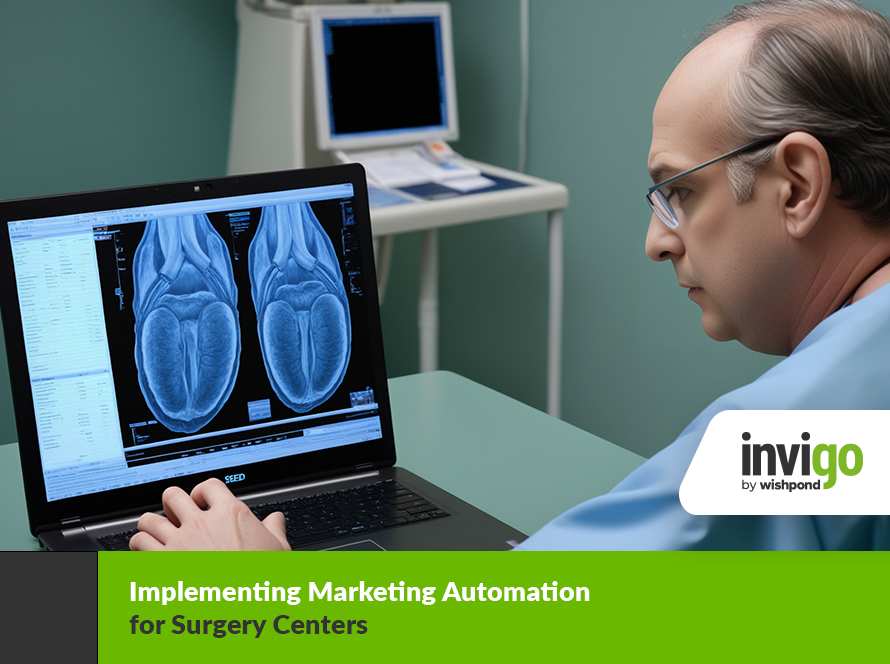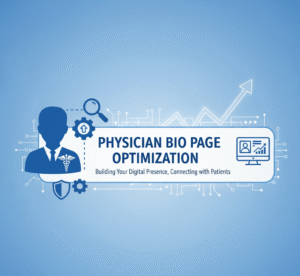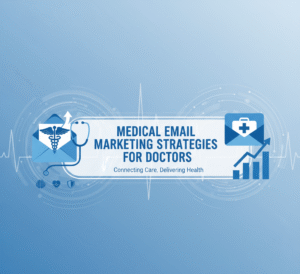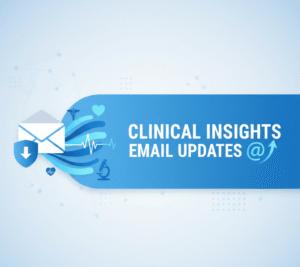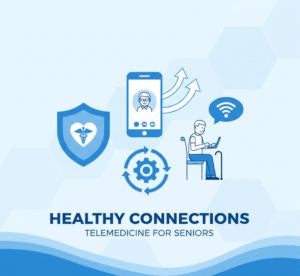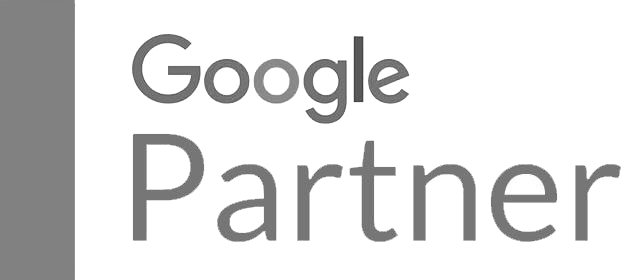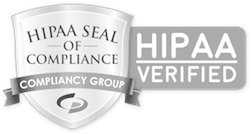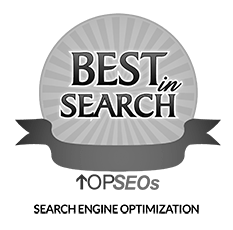“Implementing marketing automation for surgery centers boosts patient engagement, streamlines scheduling, and reduces no-shows.”
In today’s competitive healthcare landscape, surgery centers face a unique challenge: attracting and retaining patients while delivering exceptional care. It’s no longer enough to offer top-tier surgical services simply. You need to connect with prospective patients, guide them through their journey, and ensure they feel supported every step. This is where marketing automation transforms how ambulatory surgery centers (ASCs) engage with their community and manage patient relationships.
This article explores how marketing automation can dramatically improve patient engagement, streamline appointment scheduling, and significantly reduce no-shows for surgery centers. We’ll delve into specific automation tools like email nurturing, CRM integrations, and behavior-based campaigns. Furthermore, we’ll see how specialized solutions, such as those offered by Invigo Media, including our EverGenius platform, provide scalable, HIPAA-compliant automation tailored precisely for surgical practices.
The Evolving Landscape of Patient Engagement in Surgery Centers
Think about the patient journey. It often begins with a health concern, leading to research, considering options, and finally, deciding on a surgical procedure. This path is rarely linear. Patients have questions, anxieties, and a desire for clear communication. While still valuable, traditional marketing methods often struggle to meet these dynamic needs.
Manual follow-ups, fragmented communication, and a lack of personalized outreach can lead to missed opportunities and a less-than-ideal patient experience. Patients might feel overlooked, or their questions might go unanswered, potentially leading them to seek care elsewhere. This is precisely where the power of marketing automation for surgery centers becomes clear.
What Exactly is Marketing Automation for an ASC?
At its core, marketing automation uses software to automate repetitive marketing tasks. For a surgery center, this means automating things like sending appointment reminders, providing pre-operative instructions, sharing post-operative care tips, and nurturing leads still exploring their surgical options. It’s about delivering the right message to the right person, at the right time, without a team member having to trigger each communication manually.
However, it’s more than just automated messages. Integrating various communication channels and data points creates a seamless, personalized patient experience. This includes email, SMS, website interactions, and even CRM data. The goal is to build stronger relationships with patients, improve operational efficiency, and ultimately, grow your practice.
Key Benefits of Marketing Automation for Surgery Centers
Let’s break down the tangible advantages that marketing automation brings to an ASC.
1. Enhanced Patient Engagement and Education
Imagine a patient considering knee surgery. They might visit your website and download an informational brochure, but then get sidetracked by daily life. Without automation, that potential patient might simply fade away. With automation, you can set up a series of emails. These emails could provide more details about the procedure, explain recovery timelines, share patient testimonials, or invite them to a virtual Q&A session.
This continuous flow of relevant information keeps your surgery center on your mind. It educates patients, proactively addressing their concerns. Furthermore, it builds trust and positions your ASC as a knowledgeable and caring provider. This consistent engagement ensures patients feel supported and well-informed, leading to higher conversion rates and greater satisfaction.
2. Streamlined Appointment Scheduling
One of the biggest headaches for any medical practice is managing appointments. Phone tag, missed calls, and manual scheduling errors can consume valuable staff time. Marketing automation can significantly streamline this process.
Consider this: an automated email can be sent with a link to an online scheduling portal after an initial consultation. Patients can then book their procedure conveniently, selecting from available slots. Confirmation emails and text messages can be automatically sent, reducing the likelihood of errors. Rescheduling can also be handled through automated systems, making the process much smoother for the patient and your staff. This frees your administrative team to focus on more complex tasks, improving overall efficiency.
3. Significant Reduction in No-Shows
No-shows are a costly problem for surgery centers. They result in lost revenue, wasted staff time, and inefficient use of operating rooms. Marketing automation offers a powerful solution through automated reminders.
A series of strategic reminders can be implemented. For instance, a patient might receive an email reminder a week before their appointment, a text message reminder two days before, and a final text reminder the morning of their procedure. These reminders can also include critical pre-operative instructions, ensuring patients are fully prepared. By consistently reminding patients and providing necessary information, you drastically reduce their chances of missing their appointment. This leads to a more efficient schedule and better resource utilization.
4. Optimized Patient Nurture Workflows (ASC Patient Nurture Workflows)
The journey from initial inquiry to post-operative recovery involves multiple touchpoints. Marketing automation allows you to create sophisticated patient nurture workflows. These workflows are pre-designed communication paths triggered by specific patient actions or milestones.
For example, a patient who fills out a “request more information” form on your website can be automatically enrolled in a “pre-consultation nurture” workflow. This workflow might include emails introducing your surgeons, detailing your facility’s accreditations, and explaining the consultation process. After a consultation, patients who haven’t scheduled a procedure can enter a “decision-making nurture” workflow, providing gentle reminders and answering common questions about surgery.
A “recovery nurture” workflow post-surgery can provide daily or weekly tips for a smooth recovery, medication instructions, and follow-up appointment reminders. This personalized, timely communication level significantly improves the patient experience and fosters long-term relationships.
5. Enhanced Communication and Information Delivery (Healthcare Drip Campaigns)
Healthcare drip campaigns are a cornerstone of effective marketing automation. These are pre-written emails or messages sent to individuals over a specific period. For surgery centers, drip campaigns are invaluable for delivering consistent information.
Think about a patient who has just been discharged. A drip campaign can provide clear, concise instructions for wound care, pain management, and activity restrictions. This reduces the need for patients to call with common questions, freeing up your nursing staff. It also ensures patients have all the necessary information, leading to better adherence to post-operative instructions and a smoother recovery. These campaigns ensure that vital information is delivered and reinforced over time.
6. Seamless Data Management (Surgery Center CRM Integration)
Marketing automation systems are most effective when integrated with a Customer Relationship Management (CRM) system. A CRM is a central database for all patient information, including contact details, medical history, appointment history, and communication preferences.
When your marketing automation platform integrates with your CRM, data flows seamlessly between the two systems. As patients interact with your automated campaigns (e.g., opening an email, clicking a link), that information is updated in their CRM profile. Conversely, patient data from the CRM can trigger specific automation workflows.
For instance, if a patient’s status in the CRM changes from “consulted” to “scheduled,” it can automatically trigger a pre-operative instruction sequence. This integration provides a holistic view of each patient, allowing for truly personalized and relevant communication. It also eliminates data silos and reduces manual data entry, improving data accuracy and efficiency.
7. Understanding the Patient Journey (ASC Marketing Funnel)
Every patient moves through a marketing funnel, albeit sometimes unconsciously. This funnel typically involves stages like awareness, interest, consideration, decision, and post-procedure care. Marketing automation allows you to design specific strategies for each stage of this ASC marketing funnel.
- Awareness: Automated social media posts or educational content aimed at potential patients searching for solutions to their health issues.
- Interest: Drip campaigns providing more detailed information to those who show initial interest, perhaps by downloading a guide.
- Consideration: Targeted emails highlighting your ASC’s unique advantages, surgeon expertise, and patient testimonials to those actively comparing options.
- Decision: Automated reminders for consultations or direct links for scheduling procedures.
- Post-Procedure Care: Automated follow-up messages, recovery tips, and requests for feedback or testimonials.
By mapping your automation efforts to each stage of the patient funnel, you ensure that no potential patient falls through the cracks. You provide consistent support, guiding them towards a positive outcome.
8. Proactive Patient Support (Patient Follow-Up Automation)
The period immediately following surgery is critical for patient recovery and satisfaction. Patient follow-up automation ensures that your patients receive the care and support they need, even after they’ve left your facility.
This can include automated check-ins via email or SMS to inquire about their recovery progress, offer medication reminders, or provide contact information for urgent concerns. You can also automate requests for patient feedback or reviews, which are invaluable for improving your services and attracting new patients. This proactive approach improves patient outcomes and strengthens their bond with your surgery center. It shows you genuinely care about their well-being beyond the operating room.
9. Building Relationships Through Content (Healthcare Email Sequences)
Email remains one of the most effective communication channels in healthcare marketing. Healthcare email sequences are pre-planned emails designed to achieve a specific goal, such as educating patients, encouraging bookings, or soliciting reviews.
These sequences can be highly personalized based on a patient’s condition, the procedure they are considering, or their stage in the treatment process. For instance, a patient scheduled for cataract surgery might receive emails explaining the procedure, what to expect on the day of surgery, and post-operative eye care instructions. High-quality, informative email sequences build trust, reduce patient anxiety, and ensure they are well-prepared for appointments and recovery.
10. Identifying Your Most Engaged Leads (ASC Lead Scoring)
Not all inquiries are equal. Some potential patients are highly motivated and ready to book, while others are just beginning their research. ASC lead scoring assigns a numerical value to leads based on their interactions with your marketing materials.
For example, a patient who opens every email, clicks on multiple links, and downloads a specific brochure might receive a higher lead score than someone who only visited your website once. This scoring helps your team prioritize their outreach efforts, focusing on the most engaged and promising leads. It ensures that your valuable staff time is spent on individuals most likely to convert into patients, making your marketing efforts more efficient and effective.
11. Modernizing Your Operations (Surgery Center Software)
Implementing marketing automation often involves leveraging specialized surgery center software. This software isn’t just about sending emails; it’s about integrating various aspects of your operations to create a cohesive patient experience.
Modern surgery center software can include features for scheduling, billing, electronic health records (EHR) integration, and, of course, marketing automation. Choosing software that offers robust marketing automation capabilities or integrates seamlessly with dedicated automation platforms is crucial. This helps consolidate data and workflows, leading to a more efficient and patient-centric practice.
12. Re-Engaging Past Patients and Prospects (ASC Remarketing Ads)
Even with the best nurturing, some potential patients might not convert immediately. ASC remarketing ads are a powerful way to re-engage these individuals. When someone visits your website but doesn’t complete a desired action (e.g., booking a consultation), remarketing allows you to show targeted ads on other websites or social media platforms.
These ads can serve as gentle reminders, highlighting a specific service they viewed or offering a limited-time consultation. For past patients, remarketing can be used to promote follow-up services or new offerings. This keeps your surgery center visible and top-of-mind, bringing interested prospects into your marketing funnel.
Implementing Marketing Automation: A Step-by-Step Guide
Now that we understand the immense benefits, let’s consider how to implement marketing automation effectively in your surgery center.
Step 1: Define Your Goals
Before you choose any software or design a single campaign, clearly define what you want to achieve. Do you want to:
- Reduce no-shows by 20%?
- Increase online appointment bookings by 30%?
- Improve patient satisfaction scores related to communication?
- Generate more qualified leads for a specific surgical specialty?
Having clear, measurable goals will guide your strategy and allow you to track your success.
Step 2: Understand Your Patient Journey
Map out the typical patient journey for your most common procedures. From initial symptom awareness to post-operative care, identify every touchpoint and every question a patient might have. This detailed mapping will reveal opportunities for automation.
Consider different patient segments. A patient seeking elective cosmetic surgery will have a different journey and information needs than someone undergoing emergency appendectomy. Tailor your automation accordingly.
Step 3: Choose the Right Platform
Selecting the right marketing automation platform is a critical decision. Not all platforms are created equal, especially regarding the unique healthcare requirements, such as HIPAA compliance.
Look for a platform that offers:
- HIPAA Compliance: This is non-negotiable. Ensure the platform meets all regulatory requirements for protecting patient health information.
- Integration Capabilities: Can it integrate with your existing CRM, EHR, or scheduling software? Seamless integration is key for a unified patient view.
- Automation Features: Does it offer robust email marketing, SMS capabilities, workflow builders, lead scoring, and reporting?
- Scalability: Can it grow with your practice as your patient volume increases and your needs evolve?
- User-Friendliness: Is the platform intuitive for your team to use and manage?
- Support: What kind of customer support is available?
Step 4: Develop Your Content Strategy
Automation needs content to thrive. You’ll need a library of high-quality, informative, and engaging content for your various campaigns. This includes:
- Email Templates: For appointment reminders, pre/post-op instructions, educational series, and testimonials.
- SMS Messages: These are for quick reminders and urgent updates.
- Website Content: FAQs, service pages, surgeon bios, patient stories.
- Educational Materials: Downloadable guides, videos, infographics.
Ensure all content is clear, concise, empathetic, and aligns with your brand voice.
Step 5: Design and Implement Workflows
This is where the automation truly comes to life. Start with simpler workflows and gradually build complexity. Examples include:
- New Lead Welcome Workflow: When a new inquiry comes in, send an immediate welcome email, followed by a series of educational emails over the next few days.
- Appointment Confirmation & Reminder Workflow: Triggered upon appointment booking, sending a confirmation, and then a series of reminders.
- Pre-Operative Instruction Workflow: Sent to patients a week or two before surgery, providing detailed preparation instructions.
- Post-Operative Follow-Up Workflow: Initiated after discharge, offering recovery tips, medication reminders, and a link to provide feedback.
Use conditional logic within your workflows. For example, trigger a different follow-up email if a patient opens a specific email but doesn’t click a link.
Step 6: Test and Launch
Thoroughly test all your workflows and campaigns before going live. Send test emails to yourself and colleagues. Check all links, personalization tokens, and timing. Ensure messages are clear and accurate.
Once confident, launch your automation campaigns. Start with a smaller scale if necessary and then expand.
Step 7: Monitor, Analyze, and Optimize
Marketing automation is not a set-it-and-forget-it endeavor. Continuously monitor your campaign performance. Track key metrics such as:
- Open Rates: How many people are opening your emails?
- Click-Through Rates (CTR): How many people are clicking on links in your emails?
- Conversion Rates: How many automated messages lead to appointments, completed forms, or other desired actions?
- No-Show Rates: Is automation effectively reducing no-shows?
- Patient Feedback: Are patients responding positively to your automated communications?
Use this data to identify what’s working and what isn’t. A/B test different subject lines, call-to-actions, and message timing. Continuously refine your workflows to improve effectiveness and patient experience.
Invigo Media: Tailored Solutions for Surgery Centers
Implementing a robust marketing automation strategy requires specialized knowledge and tools, particularly in the highly regulated healthcare environment. This is where companies like Invigo Media come into play.
Invigo Media understands the unique needs and challenges of surgery centers. Our approach to marketing automation is designed specifically for surgical practices, ensuring efficiency and strict adherence to HIPAA compliance. We recognize that a “one-size-fits-all” solution doesn’t work in healthcare.
Invigo Media’s Marketing Automation Service focuses on building automated journeys that resonate with patients and deliver measurable results for ASCs. We help surgery centers:
- Craft effective healthcare drip campaigns: Creating sequences that educate, inform, and guide patients throughout their journey.
- Integrate seamlessly with existing systems: Ensuring your CRM, EHR, and scheduling tools work with your automation platform.
- Implement intelligent lead scoring: Helping you identify and prioritize your most promising leads.
- Develop robust patient follow-up automation: Ensuring comprehensive care and communication long after a procedure.
- Leverage advanced remarketing strategies: Re-engaging potential patients who have shown interest but haven’t yet converted.
A cornerstone of Invigo Media’s offerings is its EverGenius platform. While specific features might evolve, EverGenius is designed to be a comprehensive solution for healthcare marketing, empowering practices with scalable and HIPAA-compliant automation. Our platform simplifies managing patient communication, allowing surgery centers to focus on delivering excellent medical care.
By partnering with a specialist like Invigo Media, surgery centers gain access to expertise in both marketing automation and healthcare regulations. This ensures that your automation efforts attract and retain patients and are fully compliant and secure.
The Future of Patient Experience: Automated and Personalized
The healthcare landscape is continuously evolving, and patient expectations are rising. Patients expect seamless, personalized, and convenient interactions with their healthcare providers today. Marketing automation isn’t just a trend; it’s a fundamental shift in how surgery centers can meet these expectations and thrive.
By embracing marketing automation, ASCs can move beyond generic mass communications and deliver tailored messages that resonate with each patient. This personalized approach fosters stronger relationships, builds trust, improves patient outcomes, and a more successful practice.
Consider the long-term benefits. Happy, well-informed patients are more likely to return for future needs and recommend your surgery center to others. This organic growth, fueled by exceptional patient experiences, is invaluable. Marketing automation serves as the engine that drives this continuous cycle of engagement and satisfaction.
Conclusion
Implementing marketing automation for your surgery center is no longer a luxury; it’s a strategic imperative. It empowers you to enhance patient engagement, streamline operations, and significantly reduce costly no-shows. The capabilities are vast, from sophisticated ASC patient nurture workflows and targeted healthcare drip campaigns to seamless surgery center CRM integration and intelligent ASC lead scoring.
By leveraging specialized tools and expertise, such as Invigo Media’s solutions and our EverGenius platform, surgery centers can confidently navigate the complexities of healthcare marketing. We can build scalable, HIPAA-compliant automation strategies that transform the patient experience. The result? A more efficient, patient-centric, and ultimately, more successful surgery center, ready to meet the demands of modern healthcare. Invest in marketing automation, and watch your practice flourish as you deliver unparalleled care and communication to your patients.
FAQs
Q1: What is marketing automation for a surgery center?
Marketing automation for a surgery center uses specialized software to automate repetitive marketing tasks. This includes sending automated emails and SMS messages and managing patient communication workflows. It aims to improve patient engagement, streamline operations, and reduce staff manual workload.
Q2: How can marketing automation help reduce no-shows at my ASC?
Marketing automation significantly reduces no-shows by sending automated reminders (email, SMS) before an appointment. These reminders can also include essential pre-operative instructions, ensuring patients are prepared and less likely to forget or miss their scheduled procedure.
Q3: Is marketing automation HIPAA compliant for healthcare organizations?
Yes, marketing automation can be HIPAA compliant. However, choosing a platform and service provider (like Invigo Media) that specifically offers HIPAA-compliant solutions is crucial. This ensures that patient health information (PHI) is protected according to federal regulations.
Q4: What are “patient nurture workflows” in the context of ASCs?
Patient-nurturing workflows are automated sequences of communications (emails, texts) designed to guide a patient through different stages of their journey with your surgery center. This could involve educating them about a procedure, reminding them to schedule a consultation, or providing post-operative care instructions.
Q5: How does CRM integration benefit marketing automation for a surgery center?
CRM (Customer Relationship Management) integration allows your marketing automation platform to access and update patient data in your CRM system. This means communications can be highly personalized based on a patient’s history, interests, and current status, leading to more relevant and practical engagement. It also provides a comprehensive view of each patient’s interactions with your center.
Q6: Can marketing automation help with attracting new patients?
Absolutely. Marketing automation can help attract new patients by nurturing leads who express initial interest. This can involve sending educational content about your services, highlighting patient testimonials, and inviting prospects to learn more, moving them through the ASC marketing funnel from awareness to decision.
Q7: What kind of content do I need for marketing automation campaigns?
You need various content, including email templates for confirmations, reminders, educational series, and follow-ups. You also need SMS messages for quick updates, and potentially longer-form content like guides, videos, or FAQs to be delivered through your automated workflows. All content should be clear, concise, and informative.
Q8: How long does implementing marketing automation in an ASC take?
The implementation timeline varies depending on the complexity of your needs, the platform chosen, and the integrations required. More straightforward campaigns can be set up in a few weeks, while a comprehensive strategy with multiple integrations and complex workflows might take a few months. It’s often an ongoing process of optimization.
Q9: What is “lead scoring” in marketing automation for surgery centers?
Lead scoring is assigning potential patients (leads) a numerical score based on their engagement with your marketing materials. For example, opening an email, clicking a link, or visiting specific pages on your website might increase their score. This helps your team prioritize follow-up efforts on the most interested and qualified leads.
Q10: How do I measure the success of my marketing automation efforts?
You measure success by tracking key performance indicators (KPIs) such as email open rates, click-through rates, conversion rates (e.g., appointments booked), reduction in no-shows, and patient satisfaction scores. Regularly analyzing this data helps you optimize your campaigns for better results.
